

Recent advances in therapeutic management have been achieved, so early diagnosis is critical for optimal treatment. The common inhalational agents such as halothane, en urane, and iso urane are generally considered non ammable. Inflammatory reactions to infiltrating tumor cells can alter the permeability and function of the brain neurovascular unit at the proliferating edge of the tumor. The orced duction test consists o grasping the globe adjacent to the limbus with small orceps and rotating it up, down, in, and out. A "tandem" stenosis-defined as any lesion with an intracranial stenosis greater than 50% in the same vascular distribution distal to a primary extracranial stenosis-is present in 20% of patients (10-27) (10-31). The cervical esophagus extends rom the lower border o the cricoid cartilage to the thoracic inlet. Gouty tophus S Pain Erythema Induration or edema Fluctuation may be seen when abscess ormation occurs Cartilage de ormity in advanced or untreated cases P Pseudomonas species most commonly cultured organism rom abscess contents. When it involves the cervical carotid or vertebral arteries, it also typically spares the proximal segments. Superior laryngeal nerve innervates taste buds on the laryngeal sur ace o the epiglottis. Neurologic involvement usually occurs months to years following systemic disease but is the initial presentation in 5% of patients. Papillary carcinoma nodal metastases can o en undergo cystic ormation and may be dark red or black in color. Low cervical metastases (to the lower jugular or supraclavicular chains) are uni ormly associated with poor prognosis. In any neonate in whom acial nerve paralysis is identi ed, a complete physical examination should be per ormed, including an assessment o partial versus complete paralysis, an otoscopic evaluation, and a survey o other traumatic sequelae, additional anomalies, or both. Intraventricular and choroid plexus hemorrhages are common and may form a "cast" of the lateral ventricles. Pineocytomas are located behind the third ventricle and rarely invade it or adjacent structures (20-6) (20-7). The dura is repaired with temporalis ascia, ascia lata, lyophilized dura, or bovine pericardium gra s. Inversed Jaw-Winking Syndrome When there are supranuclear lesions o the h nerve, touching the cornea may produce a brisk movement o the mandible to the opposite side. Compares le and right peak slow-wave velocitycannot be used alone to localize lesion b. The adenohypophysis is symmetrically enlarged, sometimes nearly twice or three times normal size, but otherwise appears grossly normal. These scans have a relatively low speci city (high number o alse positives) in the identi cation o superior canal dehiscence because o the e ects o partial volume averaging. Surgical resection with radiation therapy or radiosurgery is the treatment of choice. Platysma-occipital, postauricular, acial, superior thyroid, and transverse cervical d. Well-recognized leukodystrophies include metachromatic leukodystrophy, globoid cell leukodystrophy (Krabbe disease), and X-linked adrenoleukodystrophy. Evidence-based guideline: Treatment of painful diabetic neuropathy: report of the American Academy of Neurology, the American Association of Neuromuscular and Electrodiagnostic Medicine, and the American Academy of Physical Medicine and Rehabilitation. Essential Tremor Essential tremor is the most common type of non-physiologic tremor and is often familial. This unusual appearance is found in extremely anemic patients (Hgb under 8-10 g/dL) (2-36) and sometimes occurs in patients with coagulopathy. The affected newborn shows microcephaly, a nonspecific term that refers to a smaller than expected head for normal gestational age. Direct geographic extension from a lesion in an adjacent structure (such as squamous cell carcinoma in the nasopharynx) also occurs but is much less common than hematogeneous spread. Para ollicular C cells arising rom the neural crest o the ourth pharyngeal pouch as ultimobranchial bodies migrate and in ltrate the orming lateral thyroid lobes. We next discuss superficial vein thrombosis and follow with deep cerebral occlusions. Ossi cation at round window common in postmeningitic patients (encountered in approximately one-hal o children dea ened by meningitis) ii.
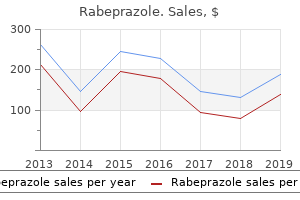
Coning o the tonsils can cause compression o the lower brainstem and upper spinal cord leading to respiratory and cardiac dys unction. Patient with dissection or pseudoaneurysm ormation o the vertebral arteries or extracranial carotid arteries may pose a dif cult treatment dilemma because optimal treatment has not been de ned. Axial section through pons and cerebellum shows multiple discrete foci of parenchymal tumor. Five percent to 10% o mothers with rubella in rst trimester give birth to baby with dea ness. If sedation is needed, as is common in pediatric patients, the usual involvement of anesthesia and recovery personnel and equipment are required and must be arranged in advance. Orbital tumors are unique in that they tend toward locally aggressive behavior, but metastasize rarely (the converse is true o other sites) g. In 20% o cases, the external branch is closely associated with the superior thyroid vascular pedicle at the level o the capsule o the superior pole, placing it at risk during ligation o the superior pole vessels. Measure time elapsing until the rst experience o sweet taste at posterior nasopharynx. Although brain injury is usually the most immediate concern in managing traumatized patients, superficial lesions such as scalp swelling and focal hematoma can be helpful in identifying the location of direct head trauma. Prognosis: good, but close ollow-up needed as average recurrence rate is about 25% Cementoblastoma A. Heterogeneous enhancement with solid and rim enhancement is typical (21-17) (21-18). Intraoral sialolithotomy-incise oor o mouth mucosa, removes stone, heals by secondary intention or suturing o duct. Pulsatile or pulse-synchronous sounds may be described, despite not being audible to observer. Brainstem/Posterior Fossa Veins the veins that drain the midbrain and posterior fossa structures are likewise divided into three groups: (1) a superior ("galenic") group, (2) an anterior (petrosal) group, and (3) a posterior group. The most common of these tumors are the embryonal neoplasms, a heterogeneous group of primitive neoplasms with protean histopathologic manifestations. Carotid Bifurcation/Internal Carotid Arteries Between 20-30% of all ischemic infarcts are caused by carotid artery stenosis (10-12). This method is utilized in digital hearing aids and allows or more com ortable listening in ears with sensorineural hearing loss with much recruitment (narrowed dynamic range). The cerebellum is covered with a cottonoid and retracted posteriorly with a at blade retractor. Overall, pineal region tumors are rare, accounting for 1-3% of all intracranial neoplasms. Three-dimensional shaded surface displays are helpful in depicting skull and facial fractures. They have a variety of causes, including direct vascular compression, systemic hypoperfusion, vascular injury, vasospasm, and venous congestion. Multiple enlarged "telangiectatic" lenticulostriate, thalamo-perforating, leptomeningeal, dural, and pial arteries develop as compensatory circulation. Sagittal images disclose a mass that fills most of the fourth ventricle and extrudes inferiorly into the cisterna magna (18-16A).
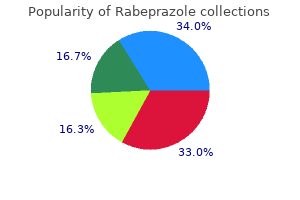
Toxicity is likely mediated through its metabolite chloroacetaldehyde, which may impair thiamine function. Infection, Inflammation, and Demyelinating Diseases 482 (15-47) Graphic illustrates common neurosarcoid locations: (1) infundibulum, extending into the pituitary, (2) plaque-like dura-arachnoid thickening, and (3) synchronous lesions of the superior vermis and fourth ventricle choroid plexus. The greater the patient sensitivity, the lesser antigen is required to initiate an allergic response. Neuropathologists add a measure of cellular proliferation called the Ki-67 proliferation index as a surrogate estimate for subsequent biologic behavior of the tumor. It shows a distinct bimodal Extraaxial Cysts this is the second largest group of nonneoplastic cysts. Hemophagocytosis, the histologic hallmark of the disease, may be scant or even absent early in the disease course. Epidermolysis bullosa: Patients have blistering after minor skin trauma, caused by congenital structural defects of the skin. Chapter 9 begins with a brief discussion of normal venous anatomy and drainage patterns before we consider the various manifestations of venous occlusion. Treatment includes debridement of necrotic superficial epidermis, topical antibiotics for bullous impetigo lesions, and oral antibi otics for more severe/widespread disease. Less e ective than aminopenicillins against gram-positive upper respiratory bacteria x. However, minimum diagnostic criteria or Bell palsy include the ollowing: (a) Paralysis or paresis o all muscle groups on one side o the ace (b) Rapid onset within 72 hours (c) Absence o signs o central nervous system disease, ear disease, or cerebellopontine angle disease Additional characteristics: viral prodrome (60%); ear pain (60%), numbness or pain o the ear, ace, or neck (60%); dysguesia (57%); hyperacusis (30%); and decreased tearing (17%). Signs and symptoms such as headache and visual disturbances can mimic those of pituitary macroadenoma although they often progress much more rapidly in patients with metastases. The best treatment or unilateral pediatric vocal cord paralysis is speech therapy. The brain is a biologically relatively protected ("sanctuary") site because of the bloodbrain barrier. Grisel Syndrome Grisel syndrome, also known as nasopharyngeal torticollis, is the subluxation o the atlantoaxial joint and is usually associated with children. The pharyngeal space is a good resonating chamber or phonation and versatile organ or articulation. Recurrent in ections: 3 per year or 3 years, 5 per year or 2 years, 7 or more in 1 year, or greater than 2 weeks o school or work missed in 1 year. Repeated binge drinking damages the cortical and subcortical microstructure of the brain. Acute lesions are often hypercellular, with foamy macrophages and prominent perivascular T-cell lymphocytic cuffing. In addition to the various nuclei, there are a erent and e erent bers, all exerting a mutual in uence on one another. Symptoms similar to traumatic perilymphatic stula with episodic attacks o vertigo to extraneous pressure. A bone conduction system is a good hearing rehabilitation method or mixed hearing losses with a signi cant conductive component, or ears with mastoid cavities which may be draining, and or ears with conductive losses which are not amenable to surgical correction (ie, congenital atresia with severe ossicular mal ormations). The tuber cinereum of the hypothalamus and mammillary bodies are fused into a single thick mass that is best visualized on midline sagittal views (25-27A). A "pseudo" sixth nerve palsy (inability to abduct the eye) is usually caused by an infiltrative lesion in the lateral rectus muscle itself. Accessory parotid tissue is located anterior to the parotid gland; slightly higher incidence o malignancy compared to the parotid. Projectiles with high kinetic energy may transfer enough energy to the skull to transform the bone fragments themselves into tiny secondary missiles. Syndromic More Common Autosomal Dominant Syndromic Disorders Branchio-oto-renal syndrome Branchio-oto-renal syndrome is estimated to occur in 2% o children with congenital hearing impairment.
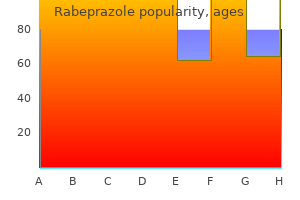
Develops in the midline as the notochord ascends through the clivus to create the neural plate S. The main causes o this syndrome include cysts and cysticercosis o the ourth ventricle as well as tumors o the midline cerebellum and third ventricle. Experts emphasize that, although dating of both brain and skeletal injuries is imprecise, the more important goal is determining whether the pattern is that of "differing age" lesions regardless of location. Inner Ear During the third week, neuroectoderm and ectoderm lateral to the rst branchial groove condense to orm the otic placode. Sulcal-cisternal enhancement, especially at the base of the brain, can be seen in some cases (27-37A). Avoid deodorants (antiperspirants are okay), tight synthetic clothing, and prolonged exposure to hot, humid environ ments. Edema, perivascular infiltrates, and microglial reaction are common in brain tissue immediately under the tuberculous exudate. Surgical strategies include three and one hal -gland subtotal resection to our-gland resection with autotransplantation to the orearm. Implicit in the surgical philosophy is that it is pre erable to render the patient hypothyroid rather than to provide inadequate resection with recurrent hyperthyroidism. Current techniques or treatment o velopharyngeal insuf ciency, Otolaryngol Head Neck Surg. These disappointing results have led to the abandonment o adjuvant chemotherapy ollowing de nitive treatment or locally advanced head and neck squamous cell carcinomas, with the prominent exception o the nasopharyngeal subsite. Acute neurotoxicity occurs in 5-18% of children treated for acute lymphoblastic leukemia. T oracic spinal cord sympathetic trunk superior cervical ganglion external carotid artery salivary glands O. Central core brain structures (basal ganglia, thalami, internal capsules, lateral and third ventricles) and most of the corona radiata are drained by the deep venous system (internal cerebral veins, vein of Galen, straight sinus) (red). Reported findings are perivascular granulomatous inflammation with multiple enhancing parenchymal lesions on T1 C+ scans. Widespread infiltrative parenchymal lesions and dural thickening/meningioma-like mass(es) are the most common manifestations. There is no periventricular "halo" around the remainder of the lateral ventricles. Common risk factors include myocardial infarction, arrhythmia (most often atrial fibrillation), and valvular heart disease. Imaging findings are nonspecific and may be indistinguishable from germinoma (20-36). Edema indicates infiltration along the perivascular spaces into the brain parenchyma. Inflamed retinal arterioles with branch retinal artery occlusions are typically present at fluorescein angiography. Systemic steroids are commonly prescribed, although data supporting their effectiveness is controversial. It then passes through a dural ring, the porus trigeminus, to enter Meckel cave (23-17) (23-18). Central neurocytoma is typically found in the body of the lateral ventricle, not the frontal horn or inferior fourth ventricle, and has a characteristic "bubbly" appearance. Meningioma Origin/Epidemiology (a) Extra-axial tumor arising rom the arachnoid cap cells. Small tumors limited to the promontory can be removed via a transcanal or anterior tympanostomy approach. Retinal detachment causes flashes followed by decreased vision (from blood) or increased floaters. Radiography reveals vascular lesion that displaces the internal carotid artery anteromedially iii. Baseline examination-including stroboscopy-per ormers may have asymptomatic nodules or other lesions, which could be "red herrings" i there is a subsequent voice disorder viii. The overall most common extracranial primary tumor that metastasizes to the brain parenchyma is lung cancer (especially adenocarcinoma and small cell carcinoma).
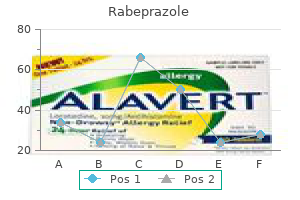
There are four "must know" questions in acute stroke triage that need to be answered rapidly and accurately. Advantages such as improved surgical exposure, decreased duration o hospitalization, elimination o external incisions, and decreased overall morbidity have led to the insertion o endoscopic skull base surgery into mainstream practice. They may also show evidence of siderosis and prior lobar hemorrhages of differing ages. Signal intensity in subacute stroke varies depending on (1) time since ictus and (2) the presence or absence of hemorrhagic transformation. To perform the test, masking noise is introduced through the headphones as the patient reads aloud. Patients wh are eeling sleepy als c mm nly eel the need t take stimulants (eg, excess ca eine) that can urther alter sleep hygiene. This technique is better or intermittent leaks as the pledgets are in place or several hours. The corona radiata is almost completely hyperintense except for its most anterior and peripheral fibers. Clear understanding o duration, circumstance, and associated otologic symptoms can help narrow the di erential diagnosis c. Obstructive hydrocephalus and a small focus of calcification in the mass are present. Pubic lice (Pthirus pubis): the crab louse is Image 12-30: Body louse sexually transmit- ted and can also infect the eyelashes. Motor innervation to all ipsilateral intrinsic laryngeal muscles except cricothyroid. Infection, Inflammation, and Demyelinating Diseases 376 Selected References Congenital Infections Lee J: Malformations of cortical development: genetic mechanisms and diagnostic approach. Neoplasms, Cysts, and Tumor-Like Lesions 712 Secondary changes of muscle edema or denervation with atrophy and fatty infiltration can occur with motor nerve schwannomas. The intermediate syndrome is characterized by cranial nerve palsies, proximal muscle weakness, delayed polyneuropathy, and Parkinson-like extrapyramidal symptoms. Earmu s, custom- tted earplugs, or disposable earplugs provide 20 to 40 dB of sound attenuation, more in high frequencies than in low frequencies. Some advocate electrocautery o pyri orm sinus tract alone, however, potential risk o injury to recurrent laryngeal nerve exists. To date, this group includes astroblastoma, chordoid glioma (of the third ventricle), and angiocentric glioma. Anterior: pharynx and esophagus (middle layer o deep cervical asciabuccopharyngeal ascia). Norrie syndrome Classic eatures o Norrie syndrome include speci c ocular symptoms (pseudotumor o the retina, retinal hyperplasia, hypoplasia and necrosis o the inner layer o the retina, cataracts, phthisis bulbi), progressive sensorineural hearing loss, and mental disturbance. Innervation: recurrent laryngeal nerve, except or the cricothyroid muscle, which is supplied by the external branch o the superior laryngeal nerve B. Typically, the hearing loss begins in a notch pattern in the 3000- to 6000-Hz region but with repeated exposure broadens to the other frequency regions giving a shallower notch. Xeroderma Pigmentosum (Autosomal Recessive) this disorder presents as photosensitive skin with multiple basal cell epitheliomas. Hypoxicischemic encephalopathy involves the caudate and other deep gray nuclei in addition to the putamina. Nodes harboring metastatic disease are predominantly solid and demonstrate avid contrast enhancement. Chvostek Sign Chvostek sign is the acial twitch obtained by tapping the distribution o the acial nerve. Mortality in the low-risk group is approximately 1% to 2%, while in the high-risk group it is approximately 40% to 50%. Associated symptoms o ear ullness, tinnitus, and mild or uctuating hearing loss help localize the problem to the ear. Sandi er syndrome: is abnormal contortions o the neck associated with unrecognized hiatus hernia in children. Lacrimoauriculodentodigital Syndrome Autosomal dominant, occasional middle ear ossicular anomaly with cup-shaped ears, abnormal or absent thumbs, skeletal orearm de ormities, sensorineural hearing loss, and nasolacrimal duct obstruction are the characteristics o lacrimoauriculodentodigital syndrome.
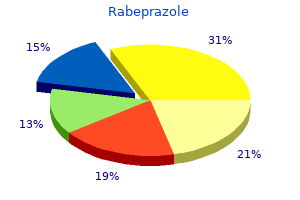
Preoperative endocrinologic management is essential in order to return the patient to the euthyroid state so as to avoid perioperative thyroid storm. During the 2015 Ebola epidemic in West Africa, it became apparent that many patients likely died from acute fulminant meningoencephalitis, which was not initially recognized because of multiorgan involvement. Deposition occurs within glial cells, plasma membranes, inner layer of myelin sheath, neurons, Schwann cells, and macrophages. All bone covering the dura rom the sigmoid sinus to the porus acousticus is removed as well as the bone covering the middle ossa dura. Some cases show an isolated focus of diffusion restriction in the corpus callosum splenium (30-10F). Stage I extends from the time of initial injury to just before the fracture enlarges. Masking dilemma occurs when there is bilateral 50 dB air-bone gap and requires special audiometric techniques vi. High rates of chorioretinitis and hydrocephalus are observed, thus often mimicking the imaging features of toxoplasmosis. Schwannomas displace nerve fascicles, whereas neurofibromas infiltrate between fascicles. Adenotonsillar hypertrophy with dysphagia, speech abnormalities, and occlusive abnormalities (adenotonsillectomy) iii. Roughly 30-40% of cellular schwannomas recur after subtotal resection but do not undergo malignant transformation. Low thyroid-binding globulin levels can occur in hypoproteinemic states in acromegaly, and with androgen and anabolic steroids (able 33-1). Note subependymal nodules and cortical tubers with "blurring" of the gray-white interface. The most common primary sources in adults are renal cell carcinoma and lung cancer. H3 K27M-mutant diffuse midline glioma is mostly a tumor of children but can also occur in adults. Lesions are yellowish-white and vary from discrete dura-based nodules to granular, poorly defined parenchymal infiltrates. There was no enhancement of this cyst and no intracystic nodule to suggest a Rathke cleft cyst. Mineralizing microangiopathy with basal ganglia calcifications and endothelial hypertrophy with gross cerebral vasculopathy are seen in some cases. In hyperacute stroke, cell death has not yet occurred, so the combined term acute cerebral ischemia-infarction is often used. Rather, conventional intracranial schwannomas are distinguished-and discussed here-according to their cranial nerve of origin. The skin over the cartilaginous canal has sebaceous glands, ceruminous glands, and hair ollicles. Acute alcohol poisoning is a complication of binge drinking and is most common in adolescents and young adults. Rhinovirus, adenovirus, and enterovirus Cha pter 54: Highlights and Pearls 1117 2. Because they are anatomically constrained by the tough fibrous periosteum and its insertions, cephalohematomas rarely attain large size. Increased intra-abdominal pressure due to pregnancy, obesity, tight clothing, ascites, constipation. Injury occurs initially at outer hair cells, but spiral ganglion can be af ected with prolonged treatment. Although parenchymal metastases vary in size from microscopic implants to a few centimeters in diameter, most are between a few millimeters and 1. Open mouth posture leads to unopposed compressive action o masseter muscles on maxilla and overgrowth o molars due to lack o contact.
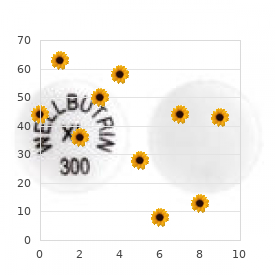
There is no surrounding edema, and the mass effect relative to the size of the cyst is minimal. There ore, obtain in any patient with thick lesions, evidence o local invasion, or evidence on clinical examination or regional metastasis. Almost 60% center in the hypothalamus/optic chiasm, often extending into both temporal lobes (17-16). Pseudoaneurysms (also sometimes called "false" aneurysms) are focal arterial dilatations that are not contained by any layers of the normal arterial wall. Conductive hearing loss can occur rom hemotympanum, tympanic membrane (M) per oration, and ossicular discontinuity. The geographic distribution of A deposits corresponds anatomically to the perivascular drainage pathways by which interstitial fluid and solutes are eliminated from the brain. Isolated laryngeal paralysis due to other central lesions (such as stroke) is rare, as other cranial nerves are usually a ected. Olfactory stria from the trigone pass into the brain with the largest tract, the lateral olfactory stria, terminating in the temporal lobe. Mild to moderate patchy enhancement following contrast administration is common; strong, uniform enhancement is rare. The uncus and hippocampus of the left temporal lobe are herniated medially over the edge of the tentorium. Benign Paroxysmal Positional Vertigo The symptoms include sudden attacks o vertigo precipitated by sitting up, lying down, or turning in bed. Electrocardiography reveals large waves and prolongation o the Q interval, which may lead to syncopal episodes as early as the second or third year o li. The aps are then redraped and tailored prior to closure while avoiding any tension on the skin. Low-set pinnae External canal atresia Micrognathia, high-arched palate Peculiar nger position Prominent occiput Cardiac anomalies Hernias Pigeon breast Mixed hearing loss Incidence is 0. Fractures extending to a dural sinus or the jugular bulb are associated with venous sinus thrombosis in 40% of cases. Septum: composed o quadrangular cartilage, perpendicular plate o the ethmoid, vomer iv. Disorders o the Oral Cavity, Pharynx, and Esophagus Disorders o the Oral Cavity Dental Developmental Abnormalities A. Winkler Disease (Chondrodermatitis Nodularis Chronica Helicis) Arteriovenous anastomosis and nerve ending accumulation at the helical portion o the ear are evident. T s all ws r muscle relaxat n, wh ch s used t ac l tate ntubat n the trachea and t pr v de r pt mum surg cal w rk ng c nd t ns. Depending on size, location, and symptoms, treatment options range from watchful waiting to surgery and stereotactic radiosurgery. Longitudinal Fracture Longitudinal ractures constitute 80% o the temporal bone racture. Ependymal cysts are rare lesions, accounting for less than 1% of all nonneoplastic intracranial cysts. Biopsy disclosed acute demyelinating disease without evidence of neoplasm or infection. Twothirds occur as a solitary, sporadic lesion; approximately onethird are multiple. The perinatal time frame is defined as the period beginning at 20-28 weeks of gestation prior to birth and extending 14 weeks after birth. Extraventricular obstructive hydrocephalus is one of the earliest and most common complications. It is used or palliation o obstructive esophageal and tracheobronchial lesions, photocoagulation o vascular lesions, and lymphatic mal ormations. Decreased tw tch he ght (dep larz ng relaxants) r ade (n ndep lar z ng relaxants) t e ther tra n- - ur (ur 2-Hz mpulses n 2 sec nds) r tetanus (50-100 Hz r 5 sec nds) s pr p rt nal t the percentage neur muscular bl ckade. Continuous and longer sound exposure cause a greater threshold shi than interrupted noise.